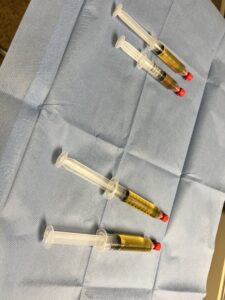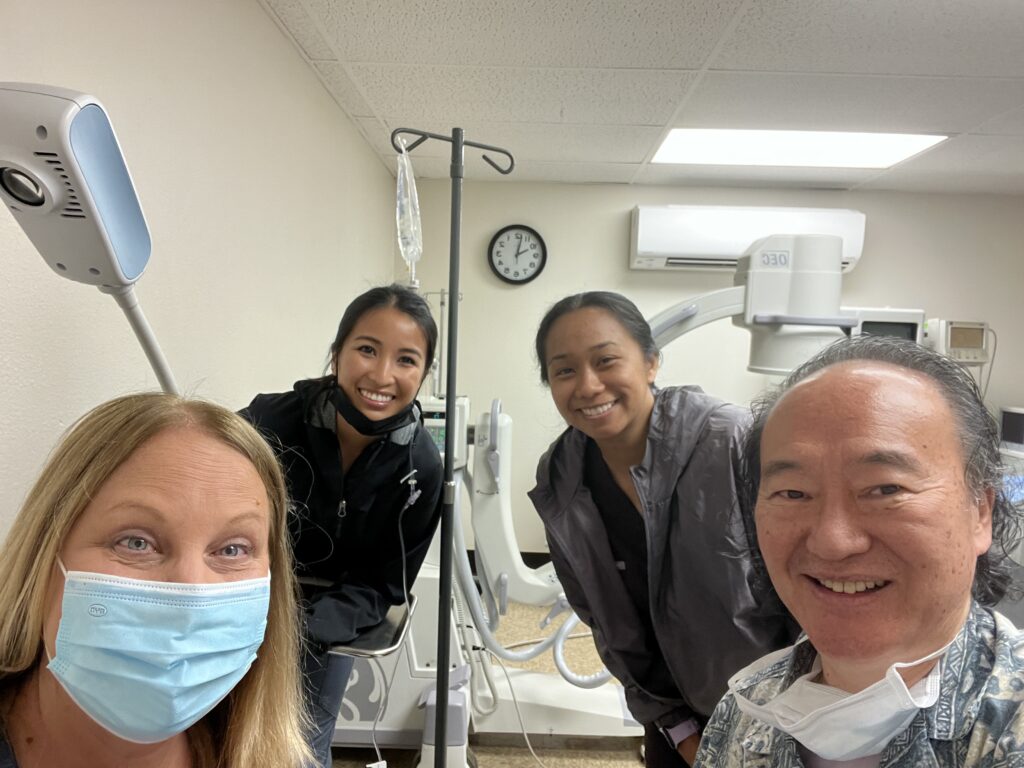Daily tasks had become unbearable due to the pain and weakness in my left hand. I struggled to hold a plate with one hand or to cut food with a knife. Simple activities like getting dressed or gripping an envelope caused significant pain in my left thumb and wrist. Given the amount of typing my job required, I could no longer manage with just ice packs or wrist braces for my basal thumb joint. I had reached a breaking point and needed a more effective treatment strategy.
For years, I had placed rheumatoid arthritis (RA) and fibromyalgia at the top of my treatment plan, while osteoarthritis (OA) in my hands worsened in the background. Eventually, it emerged like a bear coming out of hibernation, demanding immediate attention.
The carpometacarpal (CMC) joint, also known as the basal joint or trapeziometacarpal joint, connects the thumb’s first metacarpal to the trapezium carpal bone. This joint is crucial for the thumb’s range of motion, allowing for the grasping and pinching actions essential for daily tasks.
What Does OA Pain Feel Like?
Try making an “okay” sign by touching your thumb to your index finger or align your thumb with your index finger. Do you feel strain and pain? I had so much inflammation in my CMC joint that it was impossible to do either action, making gripping and pinching unthinkable and impacting everything I needed to do throughout the day.
My pain specialist and I revisit my pain management plan regularly, and I’ve used many different treatments on my left basal joint, including:
- Bracing
- Compression gloves
- Glucocorticoid injections (3 steroid shots) over a two-year period
- Heat
- Ice
- NSAIDs (non-steroidal anti-inflammatory drugs)
- Pain medication (Tramadol, Gabapentin)
- Physical therapy
- Topical analgesics
Many of these treatments provided temporary relief — the pain, stiffness, and swelling in this joint would wane, but then rebound. I was inching closer to surgery, and had even scheduled a consultation with a surgeon, when my pain specialist intervened. He recommended that I consider platelet-rich plasma (PRP) therapy.
What Is Platelet-Rich Plasma (PRP) Therapy?
PRP therapy involves injecting a concentrated dose of a patient’s own platelets into areas affected by pain. Unlike painkillers, which may only mask pain temporarily, PRP is designed to accelerate the body’s natural healing processes, offering a potential long-term solution to pain relief.
“The reason I recommend PRP is it’s your own material from your own body helping your body heal more quickly,” says Daniel S. Choi, MD, MBA, a skilled interventional pain physician at the Spine and Pain Center of Kauai. He explained that this method uses your own body’s material to facilitate repair, rather than introducing chemicals. Dr. Choi, who focuses on minimally invasive methods to reduce pain and improve quality of life, is also my pain specialist.
How PRP Therapy Works
PRP therapy utilizes the body’s natural healing mechanisms, which include some level of inflammation. Although often viewed negatively, inflammation actually initiates the body’s repair process. Growth factors released by platelets help rebuild tissues, starting with inflammation.

Step One: Drawing the Blood
The procedure begins with the collection of a small amount of your own blood, typically drawn from your arm like a regular blood test. This approach ensures the safety of the therapy, using your body’s natural elements to minimize the risk of allergic reactions or infections.
Step Two: Processing the Blood
Once your blood is collected, it is placed in a centrifuge, a machine that spins the blood at high speeds to separate its components. Platelets—cells in your blood that aid in healing and growth — are isolated and concentrated during this spinning process. The result is PRP, which has a much higher concentration of healing platelets than what is typically found in blood.
Step Three: Injecting PRP into the CMC Joint
With the PRP prepared, the next step involves injecting it directly into the CMC joint. This is usually performed under the guidance of an imaging technique, such as ultrasound, to ensure accuracy. Injecting PRP directly into the affected area aims to jump-start and enhance the body’s natural healing processes.
Step 4: The Healing Process
After the injection, the platelets in the PRP release growth factors and other proteins that promote tissue repair and reduce inflammation. This can lead to reduced pain and improved function in the CMC joint. The healing effects are not immediate and typically develop over weeks to months. During this time, you might be advised to rest the joint or engage in specific types of physical therapy to maximize healing.
Step 5: Follow-Up
The final step involves follow-up visits with your doctor to monitor the progress of the treatment. Depending on your response, additional treatments may be suggested to further aid healing. A very important piece for me to remember was TO NOT USE THAT JOINT for two weeks, or as directed by your doctor. Let it heal. Yes, I’m using dictation to write this, because I want to give my joint every opportunity to heal.
Why PRP Was Right for Me
PRP therapy offers a promising option for managing pain and dysfunction in the CMC joint, applying the body’s own healing mechanisms in a targeted way. As with any medical treatment, discussing the potential benefits and risks with your health care provider is crucial to determine if it’s the right option for you.
Here are a few leading reasons why I decided to try PRP.
- Research-based benefits: PRP can allow for an increase in movement and functional ability, improved muscle strength, and reduced pain levels.
- Alternative to surgery: PRP is a possible alternative to prescription medication or surgical procedures. Surgery involves a longer healing period.
- Confidence in my doctor: I have full confidence in my pain specialist and his team in providing the best treatment options for me.
Frequently Asked Questions About PRP Therapy
Here are some common questions I asked about platelet-rich plasma (PRP) therapy and the answers I found:
Is it painful?
Yes, but the pain is short-lived. I had a few options to get through the pain caused by the PRP procedure: do nothing, take Valium, or use mild intravenous (IV) sedation. I elected to use mild sedation.
How likely is this to work?
This may depend on where PRP is used on the body and on the person’s condition. According to research published in the Archives of Rehabilitation Research and Clinical Translation, 68 percent of joint injections showed moderate or excellent improvement, with therapeutic effects lasting for more than 15 months.
When will I know if it worked?
Patients may start to notice improvements within a few weeks to months after the treatment. The full benefits of PRP therapy might take several months to manifest, and the timeline can differ from person to person based on factors such as the severity of the joint damage, the individual’s overall health, and adherence to post-treatment care.
Will my insurance cover it?
PRP therapy is not covered by my insurance, and the cost is around $600 to $700, depending on whether you use IV sedation. It’s always a good idea to check directly with your insurance provider to get the most accurate and up-to-date information regarding coverage for PRP therapy in your particular case.
Do I need to stop any medications before or after the PRP therapy?
For me, the answer was yes. I needed to pause taking the nonsteroidal anti-inflammatory drug (NSAID) I was taking and was able to restart it two weeks after PRP.
How do NSAIDs impact platelet function?
NSAIDs work by inhibiting certain enzymes in the body, specifically those involved in the inflammation process. These enzymes are also crucial for the activation of platelets, which play a key role in healing. By taking NSAIDs, you could potentially reduce the effectiveness of the platelets’ ability to form clots and release the growth factors necessary for the healing process initiated by PRP therapy.
Be a More Proactive Patient with PatientSpot
PatientSpot (formerly ArthritisPower) is a patient-led, patient-centered research registry for people living with chronic conditions. You can participate in voluntary research studies about your health conditions and use the app to track your symptoms, disease activity, and medications — and share with your doctor. Learn more and sign up here.
Hasley IB, et al. Platelet-Rich Plasma Injection for Thumb Carpometacarpal Joint Osteoarthritis. Archives of Rehabilitation Research and Clinical Translation. 2023 Jan 29. doi: https://doi.org/10.1016/j.arrct.2023.100257.






